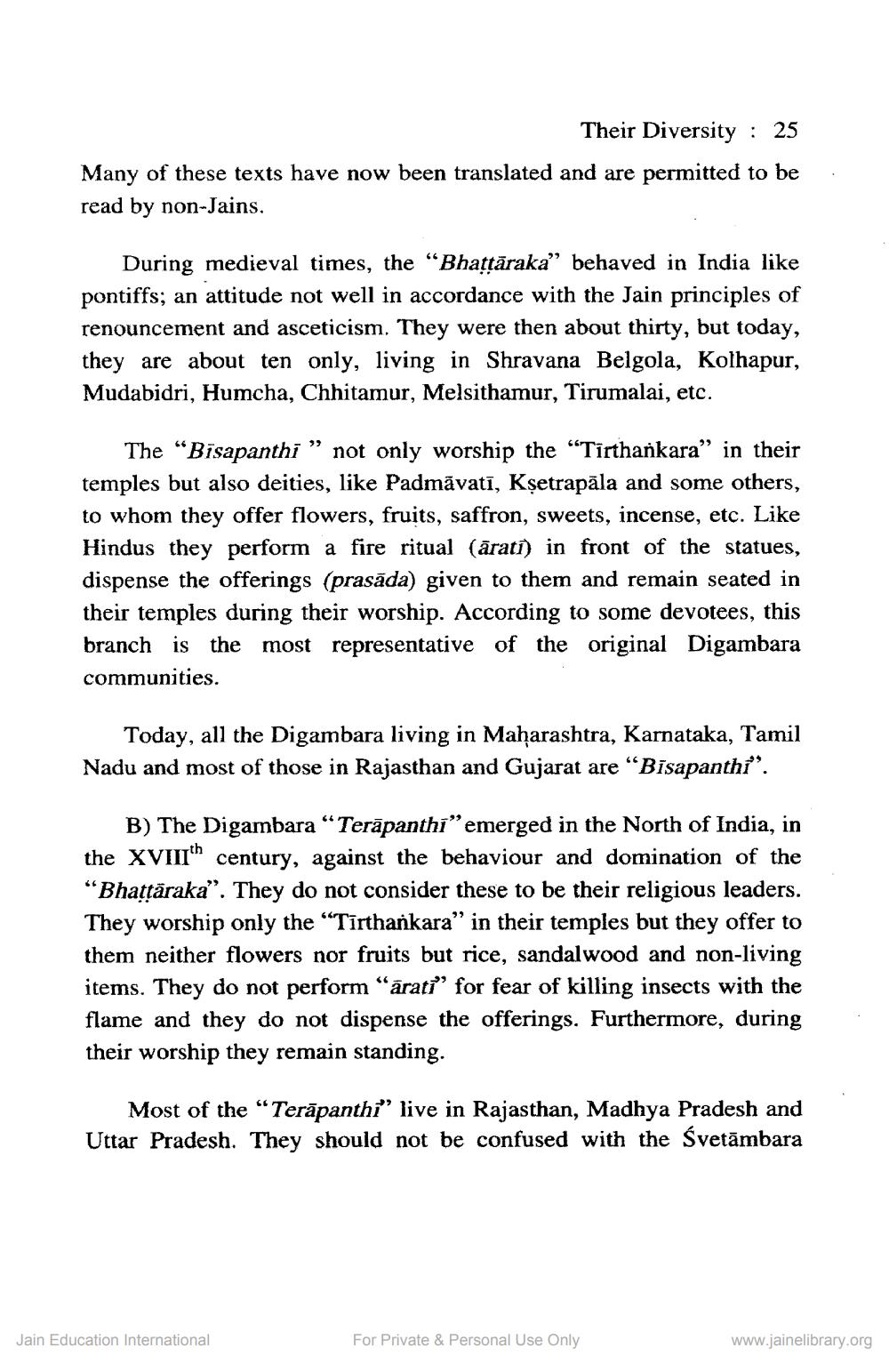________________
Their Diversity : 25
.
Many of these texts have now been translated and are permitted to be read by non-Jains.
During medieval times, the “Bhattāraka” behaved in India like pontiffs; an attitude not well in accordance with the Jain principles of renouncement and asceticism. They were then about thirty, but today, they are about ten only, living in Shravana Belgola, Kolhapur, Mudabidri, Humcha, Chhitamur, Melsithamur, Tirumalai, etc.
The “Bīsapanthi " not only worship the “Tīrthankara" in their temples but also deities, like Padmavatī, Ksetrapāla and some others, to whom they offer flowers, fruits, saffron, sweets, incense, etc. Like Hindus they perform a fire ritual (ārati) in front of the statues, dispense the offerings (prasāda) given to them and remain seated in their temples during their worship. According to some devotees, this branch is the most representative of the original Digambara communities.
Today, all the Digambara living in Maharashtra, Karnataka, Tamil Nadu and most of those in Rajasthan and Gujarat are “Bīsapanthi".
B) The Digambara "Terāpanthi” emerged in the North of India, in the XVIIIh century, against the behaviour and domination of the “Bhattāraka”. They do not consider these to be their religious leaders. They worship only the "Tīrthankara" in their temples but they offer to them neither flowers nor fruits but rice, sandalwood and non-living items. They do not perform "ārati" for fear of killing insects with the flame and they do not dispense the offerings. Furthermore, during their worship they remain standing.
Most of the “Terāpanthi" live in Rajasthan, Madhya Pradesh and Uttar Pradesh. They should not be confused with the Śvetāmbara
Jain Education International
For Private & Personal Use Only
www.jainelibrary.org




